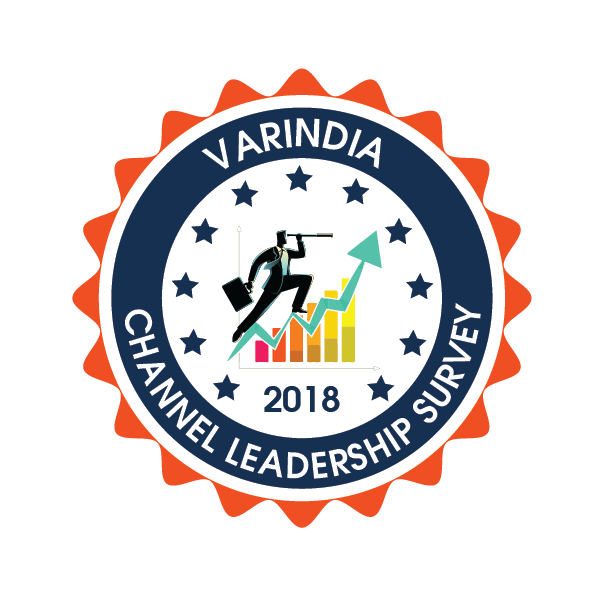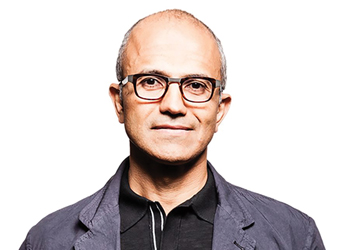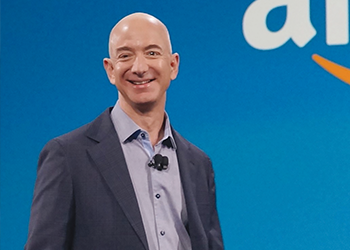
Technology is changing the society. India is rapidly marching towards becoming a digitally empowered society. The push for e-governance, the proliferation of smartphones, increasing Internet access and booming digital payments are fueling the country’s journey towards a trillion-dollar digital economy by 2025. India presents a unique and a powerful growth story.
Business is getting personal. Leaders must shift their mind-sets and business models to focus on forging strong, trusted relationships with partners, customers, employees, governments, and more. Leading companies like Dell, HP, HPE, Cisco, Lenovo, Microsoft, Oracle, IBM, Epson, Samsung, Canon and LG are improving the way we live with new products and services that will become indispensable in the future.
India’s IT industry is increasingly focusing on digital opportunities and is expected to grow over 30 per cent annually. 5G connectivity is set to accelerate the deployment of next generation ubiquitous ultra-high broadband infrastructure.

India’s PC market is buoyed by strong notebook demand; the Server market grew with a revenue growth of 33.7% in Q1 2018; the HCP (Inkjet, laser, SDM and line printers) market in India posted the highest growth (year-on-year) of 23.1 per cent in the second quarter of 2018; the software market is expected to achieve a year-on-year growth of 13.5% by the end of year 2018 to reach to USD 5.6 billion and the networking market which includes Ethernet switch, Routers and WLAN segments witnessed a 10.8% YoY growth in Q12018 with increased investments across the enterprise and service provider deployments. The Govt. initiatives including 2.5 lakh GPs (gram panchayats) will be covered with Wi-Fi by March 2019. Mahanet and BharatNet projects will thus fuel the growth.
India will remain the topmost offshoring destination for IT companies across the world. Having proven its capabilities in delivering both on-shore and off-shore services to global clients, leading IT firms like Infosys, Wipro, TCS, Tech Mahindra and Accenture are diversifying their offerings and showcasing leading ideas in blockchain, artificial intelligence to clients using innovation hubs, research and development centres, in order to create differentiated offerings.
VARINDIA brings the annual report for the C-suite leaders to better understand the interplay between digital and marketing performance of different vendors. VARINDIA has created this Channel Leadership Survey (CLS) Business Performance, based on our survey (online/Offline) involving vendors and partners of 500 leading organisations across verticals.
Technology is moving faster than ever, and it shows no signs of slowing down. Software is eating the world; the real winners of tomorrow are the ones diving into the emerging technologies of today.
The fact of the life is that digital has disrupted every industry. Your customers now expect you to be personal. Digital transformation is the application of technology to build new business models, processes, software, and systems that result in more profitable revenue, greater competitive advantage, and higher efficiency. Most of the vendors feel that digital enablement of top partners is going to be the key strategy going forward.
Digital transformation is disrupting businesses in every industry by breaking down barriers between people, businesses, and things. By breaking these barriers, they are able to create new products and services and find more efficient ways of doing business. Secondly, when we think of building a converged infrastructure in a corporate environment, it means that more than just replacing a few network devices, it requires an entirely different way of looking at a company's network infrastructure and the kind of IT staff needed to support it.
India has emerged as the fastest growing economy in the world. For deeper penetration across the country, the channel partner eco-system is being developed and is now, the top of mind for every companies worldwide. The partners on their end need to unlock the available resources with full potential. They also need to unlock intelligent transformation, because the scale is too vast and no company can drive it alone fully. Vendors must dedicate themselves to open partnerships and cross-border collaboration.
With the above backdrop, we present to you the "Channel Leadership Survey" (CLS 2018), where the partners have shared their experience about their favourite vendors. We also bring forth emerging technologies, product evolutions (hardware/software/services) by technology vendors, training & certification and partner profitability that speaks about their overall positioning in the Indian market.
Highlights of CLS 2018 (India Specific) -
1. Disruptive technology displacing established technologies and shaking up the industry to create a completely new industry.
2. Enterprises moving to an all-flash storage system to create a new decision matrix
3. Software-defined storage (SDS) is the fast storage used in HCI, which has shown rapid growth
4. Successful rise of Artificial Intelligence, automation and development of blockchain is now seeing success.
5. PC shipment has shown a healthy growth of 29%, with strong demand for notebook. Vendors are reinventing newer initiatives to strengthen their channel business by incentivising their business partners.
6. Ink tank market continues to rise steadily and now commands almost 70 percent of the inkjet market.
7. Digital India turning out to be a successful factor for many technology vendors by working with regulators.
8. Wi-Fi choupals set up in all 2.5 lakh gram panchayats to offer last-mile connectivity, thus bringing opportunity for multiple vendors.
9. Cyber criminals going to create 5 million new, unfilled cyber security jobs by 2021.
10. After China and the US, India’s 1.3-billion consumer base is becoming the next battleground for every e-commerce companies from Alibaba to Amazon.
The Annual Channel Leadership Survey is based on the feedback received from both the vendor and partners in the Indian IT and Telecom Industry. This year the report comes at a time when the government is getting ready for the General Elections 2019 and the country has witnessed the successful implementation of the biggest Tax reforms (GST).
Famous quotes by Global Leaders

Satya Nadella, CEO, Microsoft
“Every company is a software company. You have to start thinking and operating like a digital company. It’s no longer just about procuring one solution and deploying one. It’s not about one simple software solution. It’s really you yourself thinking of your own future as a digital company,”
 John Chambers Executive Chairman, Cisco System
John Chambers Executive Chairman, Cisco System
“At least 40% of all businesses will die in the next 10 years, if they don’t figure out how to change their entire company to accommodate new technologies,”

Jamie Dimon Chairman, President and CEO - JPMorgan Chase
“Silicon Valley is coming and if banks don’t up their game, then tech companies will take over the industry’s business. There are hundreds of start-ups with a lot of brains and money working on various alternatives to traditional banking,”
 Jeff Bezos Founder - Amazon
Jeff Bezos Founder - Amazon
“In today’s era of volatility, there is no other way but to re-invent. The only sustainable advantage you can have over others is agility, that’s it. Because nothing else is sustainable, everything else you create, somebody else will replicate,”
Digital is the new norm in the ICT industry
 India has emerged as the fastest growing economy in the world, with the country’s GDP estimated to have increased 6.6 per cent in 2017-18, which is further expected to grow 7.3 per cent in 2018-19. There is a massive transformation happening in the industry - the digital revenue has grown from 14% to 20%. We expect it to cross 25% by 2020 where software and hardware from different vendors and standards will coexist.
India has emerged as the fastest growing economy in the world, with the country’s GDP estimated to have increased 6.6 per cent in 2017-18, which is further expected to grow 7.3 per cent in 2018-19. There is a massive transformation happening in the industry - the digital revenue has grown from 14% to 20%. We expect it to cross 25% by 2020 where software and hardware from different vendors and standards will coexist.
With the rapid development in ICT, the Technology sector in India has seen massive transformation happening in the last couple of years. To vet the current technology landscape, we spoke to a few technology vendors to understand the trends that they foresee in the prevailing market and the feedback from every one of them points to one single fact and that is digital transformation -
Security
“Last several years could be described as a milestone year for data breaches, with the sophistication and frequency of attacks growing dramatically,” says Sunil Sharma, Managing Director Sales - Sophos India & SAARC. “Sophos has been continuously trying to innovate and come up with right solutions in the cyber security space. As companies struggle to protect against attacks, following are the security key trends that needs to be focussed on -
• According to Sophos 2018 Malware Forecast, ransomware remains a huge problem for companies and isn’t going away. Attackers have become more sophisticated with the ransomware delivery techniques that have led to outbursts such as WannaCry, NotPetya .
• The Data Protection Regulation became effective from May in Europe and affects all organisations working with European natives. The new law has placed data protection and security steadily on the agenda of all corporate boards.
• Application attacks, low system risks and mobile workforces will all add to increased security incidents in 2018. As in 2017, more organisations encountered a cloud storage incident, for example, unintentionally leaving private information exposed in the Internet.”
Artificial Intelligence (AI), AI Cloud, Big Data, and IoT are the key trends that are currently defining the security Industry. Artificial Intelligence has become the most trending technology in the recent times. Says Ashish P. Dhakan, MD & CEO, Prama Hikvision India, “On the technology front, Hikvision is leading in Artificial Intelligence, AI Cloud, Deep Learning, Big Data and IoT (Internet of things) innovations. It is enabling security and surveillance solutions to add value through advanced video analytics and business intelligence. Recently Hikvision has introduced DeepinView Cameras and DeepinMind NVRs embedded with Artificial Intelligence and Deep Learning capabilities.”
Automation has been a great moving factor in the Security industry after Artificial Intelligence. A lot of security actions are routine and repetitive. Therefore, surveillance industry is looking for ways, with the help of AI, to automate the day to day repetitive tasks. “Keeping up with this trend,” says Jatin Desai, Marketing Manager- Matrix Comsec, “Matrix launched Cognitive Responsive Engine with Automated Monitoring (CREAM) last year. CREAM module reduces the need of dependency on security personnel for repetitive tasks and eliminates false alarms by performing multi-level investigations of an event.”
Debasish Mukherjee, Country Manager India & SAARC, SonicWALL Says “Today, every business into digital support whether, small, mid-size and enterprise businesses succumb to cyber-attacks (Malware and attacks that simultaneously target separate parts of the network) and hacking attempts are common for small businesses due to poor network security. Your business may not be able to afford dedicated IT staff, but unified threat management solutions, provided by a managed IT service provider, solve most common cyber security vulnerabilities, leaving hackers to get into your system and take whatever crucial data he would require.
Small businesses are low-hanging fruit, compared to larger organizations, and hacking a few small businesses successfully is far more profitable than trying to hack a major company. What are the key factors to select a security company to protect the critical data at the premise level, which comes with best solution with affordable cost?”
UPS
Palash Nandy, CEO – Numeric believes that the UPS marketexpects a steady growth. The factors driving the growth would be - IoT and digitalization activities across sectors including GoI Digital India initiative; smart cities initiative; the need for clean power across Industries; penetration of sensitive electronic gadgets in homes and hence the need for clean and uninterrupted power at home; infrastructure growth; growth of surveillance needs and digitalization of entertainment. “We believe that the IT/ITES, Govt, Infrastructure & Healthcare segments will grow faster than the rest of the segments.We are very well placed to take advantage of this potential that India offers today,” he says.
AI, Big Data, IoT, Deep Learning
According to Harshavardhan Kathaley Director - Partner Sales, India & SAARC, Juniper Networks, with the rise of IoT, there have been opportunities in big data analytics, emergence of AI, and Mobile First Architecture with 5G on the horizon. Cloud adoption is currently the major driver of the networking industry. Having said that, this also brings with it an increase of cyber threats and soaring costs of fighting cybercrimes.
“As these trends result into RFPs & POCs; Juniper is committed to providing solutions that are driven by our technology agenda which is focused on two important dimensions –scale & performance and automation through software innovation,” he says.
HID Global believes that increased cloud and mobile access adoption, more focus on securing the Internet of Things (IoT), and data analytics are some of the top trends that will take the centre stage in developing more intelligent, connected experiences in 2018.
HID summarizes this in five significant trends -
- Organizations embracing the benefits of the cloud
- More connected devices and environments driving focus on securing the IoT
- Mobile access reaching tipping point for mass market adoption
- Convergence of physical and digital security
- Data analytics driving risk-based intelligence for predictive models and new capabilities
“HID has always focused on bringing in new technologies that can power trusted identities of people, organisations and things. Our channel partners are one of our core strengths. We are focusing extensively on scaling our existing partner network and enabling their growth in the security domain by building their capabilities according to the current market demand as well as trends,” says Vishwanath Kulkarni, Director – South Asia, HID Global.
“Artificial Intelligence, Augmented Reality, Deep Learning, Machine to Machine Sharing, Drones Operated Surveillance, Robotics, GPS, highly interconnected information and communication technologies, Internet of things (IoT) applications, and multisite monitoring are the key trends in the industry and we are proud to be a part of these trends,” agrees Robbin Shen, Managing Director, Dahua Technology India.
He cites this because the main driving factors behind Dahua’s lasting growth has been generated from the investment in the technology innovation, deep understanding of industries, the global distribution client base, the capabilities to deliver video-based AI powered IoT solutions and the ability to grasp the market pulse and general trends of this industry.
Deep learning is empowering businesses across the world, including India. Traditional industrial segments such as energy, transportation, telecommunications, healthcare, financial services, retail, information technology, government, and all their various subsectors will be transformed by the application of deep learning. “With parallel processing and parallel programming being at the heart of this trend and India being at the cusp of this revolution, NVIDIA sees a lot of potential for deep learning in India. Secondly, advances in GPU computing have enabled great leaps in compute performance. As Moore’s law continues to slow, GPU accelerated computing has helped technology advance to the age of exascale computing. Our GPUs have democratized supercomputing and artificial intelligence, making these tools available to every researcher, scientist and developer who wants to use them,” says Shridhar Garge, Head – Channels & Alliances, NVIDIA South Asia.
“Presently, we are witnessing some of the most intriguing dilemmas in the future of technology marked by a series of exponential technological advances—cloud, AI, blockchain, IoT, robotics, quantum computing and more,” says Asoke K Laha, President & CEO of Interra Information Technologies.
“Companies are getting better at extracting key business insights. User-friendly tools, APIs, and apps are ensuring that fewer people will need to know how various technologies actually work. Individually and collectively, these technologies represent vast future potential, giving an imperative call to reinvent and reimagine the way we do business,” he further adds.
“We at DIGISOL feel that the IoT space is expected to get a big boost in coming years. IoT products and solutions for homes and businesses would evolve to take the automation experience to a different level altogether. We feel that hospitality vertical and public hot-spots would be key verticals which would be generating the maximum demand for Wi-Fi network gears. With the kind of smartphone penetration, next only to China, this is the right time for Indian consumers to experience the connected world of Internet,” says Mandar Joshi – Head Channel Business, DIGISOL Systems.
Datacenter
Hyperscale datacenters are the future of datacenters. With the impending Indian Data Privacy law, most of the overseas entities operating in India will have to host the data locally. Secondly, as majority of businesses in the country will embrace cloud computing – the adoption rates are abysmally under 10% and are likely to grow to over 70% in the next 3 to 5 years. Third, with the advent of IoT, Smart Cities, explosion of data in Social media, ecommerce, online buying, there has been a compelling need to store the consumer and transactional data for analysis – hence big data combined with artificial intelligence, business analytics is gaining prominence.


“IoT deployments are likely to cross 2 billion units by 2020 in India. Mobile data – Thanks to aggressive focus by players such as Reliance Jio is leading to surge of mobile data growth, Smart phone penetration is also likely to cross 700 million. Digital India is yet another key driver of data growth – e-filing of taxes, digital payments, e-initiatives by current government led by Shri Narendra Modi will witness surge of data. All the factors – Cloud, Social Media, Data Privacy, IoT, Smart Cities, Big Data. Mobile data Digital India initiatives etc will lead to explosion of data needing hyperscale datacenters in India,”explains B.S. Rao, VP – Marketing, CtrlS Datacenters.
Today, we are witnessing the intersection of a humongous volume of data from the analog world and the vast amounts of digitally stored data, which is creating a new level of understanding about the world around us. This revolution is laying the foundation for new categories like autonomous driving, robotic manufacturing and artificial intelligence, as well as a new world of technologies not yet realized.
“As flash storage permeates the data center, it is imperative for businesses to move beyond the array that is from predictive analytics to data protection to investment strategies. Additionally, flash storage adoption continues to gain pace, a majority of organizations are expected to shift to an all-flash data center in the next half-decade,” says Som Satsangi, Managing Director – India, HPE.
Mellanox is the end-to-end technology vendor with its own unique silicon for Ethernet switches, network interface cards, cables, and transceivers. The engine for any Ethernet switch is the switching ASIC, and Mellanox’s Spectrum ASIC provides the predictable performance needed for modern datacenter infrastructure, with the best-in-class latency, power consumption, and microburst absorption capabilities.
“The key solution of Mellanox is to provide the smart network for datacenter and cloud center. What we are doing is put the computing in network and leave the CPU/GPU computing resource for application. This technology is called as network computing. This is the trend of future datacenter and cloud center. Mellanox is dominating the InfiniBand network market and has more than 60% of Ethernet marketing share in 25GE above host market,” explains Tirthankar Mitra, General Manager – India & SAARC, Mellanox Technologies India.
Digital transformation/disruption
Digital transformation is having a significant impact on technology from data-driven decision-making to cloud adoption, mobility, and the explosion in Internet-of-Things (IoT) it goes beyond just deploying new solutions. Organizations must also re-examine established business models and processes to drive innovation and better business outcomes.
“Digital transformation imperatives has increased the workload of already strained IT teams struggling to keep pace with business needs, security challenges and compliance requirements. The integration of business systems, information technology and operational technology that enables data-driven decision-making also poses new security challenges, because these newly connected systems can also accelerate the speed and damage of attacks across enterprise networks. It’s no longer sustainable for organizations to forgo digital transformation or security integration as a means to enable the other. Digital transformation and security policies must be planned and deployed in tandem,” says Rajesh Maurya, Regional Vice President, India & SAARC, Fortinet.
According to Bobby Joseph, Country Director - Plantronics India & Middle East, disruption has taken centre stage in India and there has been a massive shift in how technology is being implemented and used in the workplace. Some of the trends that he believes are -
• Collaboration driven workforce
• Open offices driving demand for noise cancelling headsets and enhanced huddle rooms
• Users wanting simple click and join
• Meetings getting smarter and more mobile
• Rise in adoption of softphone telephony with organizations moving away from the traditional deskphones and deploying computer based soft telephony systems.

Enterprises in India are investing significantly in the technologies that enable digital transformation and disruption - 5G, cloud, mobile, IoT, AI and more. Riverbed sits at the center of these trends, helping organizations embrace innovative technology without constraint and maximize their digital performance.
“As Indian organizations are embracing digital as core to their future, focusing on delivering compelling new experiences for customers and exploring new digital business models, a major challenge remains: Limited visibility into digital experience of their customers and limitations of legacy IT infrastructure are throttling digital performance, putting digital initiatives at risk,” says Subbu Iyer, Senior Vice President and Chief Marketing Officer, Riverbed Technology.
There is a significant shift in customer mind-set to leverage Digital Transformation – to either cause or respond to disruption in their businesses. Says Harmeet Kalra, National Manager- Channels & Alliances, F5 Networks, “Applications are now the currency of all digital initiatives and is seeing a significant proliferation as an effect of digital transformation. Applications, by the very nature of the new models in which they are being developed (Agile, CI/CD) and deployed (in the Cloud), are living everywhere. This is driving the need for increased Application Security, which is now critical. The third significant trend is that most customers are now considering a Multi-Cloud strategy, which leads into cloud-independence (non-lock-in) becoming a crucial conversation that businesses need to have.”
According to Thiru Vengadam, regional vice president - Epicor Software India,the key trends in the industry include -
• Your business needs to be at the top of its game. You need a laser focus on what makes you unique
• Cloud is arguably one of the greatest enabler of innovation in our time. It is now more powerful, more secure, and more connected than ever.
• It’s no longer just about mobile apps. It’s about making sure that you can access the data you need from wherever you may be located.
• As a global company with customers in over 140 countries, we are dedicated to understanding the requirements at a local level. Each country has its own unique requirements which change frequently.
Collaboration/Connected businesses
 Sudhindra Holla, Sales Director, India & SAARC, Axis Communication
Sudhindra Holla, Sales Director, India & SAARC, Axis Communication
Striving towards developing solutions to enhance reliability and quality, Axis offers a plethora of products ranging from network surveillance cameras, video servers, video decoders, video management software, and a full range of accessories. Axis solutions are built on open standards and have the distinction of getting integrated into existing applications.
“India following the global trend is tightening its security framework. This is also driving the shift from the analog to digital surveillance solutions. Technological innovations in the network connectivity and increased demand for smart network camera applications create new and increased efficiency of the security systems across segments. As per the IHS report Indian market for network video cameras is estimated to touch 194.7 million by 2020.
The market has carved a huge market opportunity for IP cameras. The segments that are making the shift towards integrated IP Audio products include – Education, defence, transportation, retail, banking & financial, critical infrastructure and oil and gas sectors. The other major security products that seeing exponential demand after IP Audio is facial recognition,” says Sudhindra Holla, Sales Director, India & SAARC, Axis Communications.
“Technology-led collaboration solutions, such as Barco’s ClickShare, will help address these gaps by redefining the meeting room experience for Indian businesses. These ‘plug-and-play’ solutions employ state-of-the-art technology to drive meeting room productivity. The platform-agnostic approach employed by these solutions also enables sharing of critical data in real-time from multiple devices. This facilitates far more engaged and involved meeting room discussions, allowing decision-making to be more information-driven and accurate,” explains Rajiv Bhalla, Managing Director, Barco Electronic Systems.
GB Kumar, Vice President - Asia Pacific, Prysm Inc. believes the same that as companies are going global and becoming more aspirational, communication and collaboration have become the corner stones for business success. Hence, the workplace is evolving drastically. This can be linked to the evolution in the enterprise collaboration market as more and more millennials join the workforce. Hence, understanding collaboration needs of these millennials and trends that are impacting those needs is significant.
“The next wave of growth in the enterprise collaboration and employee productivity space, will come from innovation of a different level altogether,” says GB.“This is where the concept of digital workplace comes into the picture. It can help teams across the globe to create, share and save projects by combining applications, content, live sources, video and the web.”
In the projector category, According to Rajeev Singh, Managing Director - BenQ India, the latest trends are -
• Rapid adaption of native 4K technology for home and Pro AV segment is a key trend.
• Continued expansion of projection technology in classrooms for private K12 and higher education segments
• Increasing government spending to upgrade educational infrastructure in government schools both at central and state government level which will continue for many years to come as current infrastructure is in poor condition and there are more than 15 lac government schools in India
The world is changing at a massive pace, so as the technologies, organizations and industries. Frequent innovation in the products and solutions plays a vital role to sustain in the market.
“With research and development at top priority, we have been pooling technological expertise in high-frequency technology and fiber optics. R&M believes in developing innovative products and solutions aligned with the latest technology trends which can serve various verticals. Smart City project is the new trending area where R&M is strongly focusing. With the high-level of product quality & forward-looking system design, R&M ensures that networks are future trending and investments are secure for long term,” says Gaurav Ahluwalia, Managing Director - R&M India.
Cyber security

Rising Risk on cyber threats raise concern
We live in a time when you can rise as high as where your ideas take you. Amidst this, technology has become an integral part of our lives, with emerging innovations like artificial intelligence, internet of things (IoT), robotics and augmented and virtual reality impacting homes, workplace, transportation and leisure. This is creating new levels of e-mobility, automation, smart buildings and even smart cities. A question arises as how safe it is if everything goes Digital.There remains a big question mark!
Organisations worldwide face security and productivity challenges every day. Zero-day malware often goes undetected because of traditional security devices. Of the 80% cyber-attacks that took place last year,40% were ransomware. No company has the entire range of 100% full proof solution which will have the complete portfolio. Reason being it is very difficult or next to impossible to understand the behaviour of the hackers. Hence, a corporate needs to buy security solutions from various companies to secure their satisfaction level.
Enterprise spending on information security products and services in India is on pace to reach US$1.7 billion in 2018, an increase of 12.5 percent from 2017, according to the latest forecast from Gartner, Inc. In 2019, the market is forecasted to total US$1.9 billion.
Recently, security researchers at Cisco Talos discovered that malicious hackers had injected a malware into Piriform CCleaner and CCleaner Cloud. This is of concern because CCleaner is used by over 75 million users worldwide to optimize their PCs. It was reported that approximately 2.27 million users were affected by the malware-laden version of CCleaner. BadRabbit (assigned by GroupIB) is a ransomware virus that affects Microsoft Windows based systems. This ransomware outbreak has had a considerable impact in the affected countries. This ransomware is reported to be an improved variant of NotPetya ransomware. It demands a ransom of $280 worth of Bitcoins (0.05 BTC). A new ransomware named “Wannacry” was spreading widely and globally. WannaCry encrypts the files on infected Windows systems. This ransomware spreads by using a vulnerability in implementations of Server Message Block (SMB) in Windows systems.
Cyber security systems and principles are designed to safeguard websites and web applications from attackers seeking to disrupt, delay, alter or redirect the flow of data. As the attackers vary in target, motive, levels of organization, and technical capabilities, public and private organizations are required to adopt ever-increasing measures to prevent cyber-attacks. People become victims of cybercrimes and scams because of less awareness about the cyber security impacting their day-to-day lives. “Most people are grossly negligent and they end up losing money on the internet because they have the habit of sharing details like passwords and pin codes with people they should not be sharing with,” said cyber expert, Pavan Duggal, an advocate in the Supreme Court.
Cyber security in India…
Digital India should define the security strategy in economic terms to be able to build an effective cyber security model to combat threats. A million-dollar question comes to my mind as why does every organisation tells that they can guarantee up to 99% of security, whereas it is absolutely not true. In our recent survey we have figured 100 companies, both Multinational and Indian companies who offer various levels of security products and solutions.
Highly publicized and high-impact security incidents in India - like the recent incident with Cosmos Bank - reinforce the need for organizations to treat security and risk management as a top business priority. Security incidents often happen because organizations have not paid attention to basic security hygiene best practices. Continued breaches reinforce the need for chief information officers (CIOs) and chief information security officers (CISOs) to view sensitive data and IT systems as critical infrastructure and prevent, detect and respond to incidents appropriately.
Over 27,000 cyber security threats were being reported to the Indian Computer Emergency Response (CERT-In) team in the first half of 2017.Cyber security is needed to safeguard websites and web applications from attackers seeking to disrupt, delay, alter or redirect the flow of data. Technology brings a new range of threats to both tangible (e.g. property) and intangible (e.g. reputation) assets. In today's business environment, a world-class digital experience is on-demand to delight your customers, sharpen your competitive edge, and boost revenue. But the job of turning ideas into reality is complex and leaves little room for error. Malware and ransomware attacks are increasing - as is the likelihood of a successful attack. Most breaches use malware, usually sent via web or email.
Various Multinational companies like Cisco, Check Point, FireEye, F5 Networks, Fortinet, Forcepoint, F-Secure, Gemalto, IBM, Juniper, Palo Alto, SonicWall, Sophos and Trend Micro etc. provide various levels of security solutions. Besides, we have many Indian companies providing solutions into Cyber Security. They include –
And so…
India is a fast mover and is an adopter of technology. However, it has very less security readiness, lesser skill set to combat threats and many other hidden factors for which it is not able to implement the right security practices. It is true that only out of fear does many organisations and corporations buy various security solutions to protect their organisations - first to get into digital, then maintain the technology infrastructure and secure those digital infrastructures and to make them resilience to get insured.
The cybercrime policy covers risks related to identity theft, social media, cyber stalking, information technology (IT) theft loss, malware, phishing, email spoofing, media liability, cyber extortion, and privacy and data breach by a third party. The sum assured ranges usually between Rs. 1 lakh and Rs. 1 crore and this costs between Rs.600 and Rs.9, 000 in premium. Apart from financial losses arising out of data theft, such policies also cover costs incurred in payments to consultants for investigating the extent of loss, court expenses and legal fees.
In the IT space, we see an increase in demand towards niche skills that have exposure in planning security frameworks across IT infrastructure, application development and app development. But there is a huge gap in filling the demand for the security skill sets in the country, the requirement for which will increase to 1.0 million by 2020.
An increasingly large number of Indians are falling victim to such frauds and ransomware is becoming today’s most prominent malware threat. Worldwide losses from cyber-attacks will hit $2.1 trillion in coming years. However, insurers are sensing an opportunity.
See What’s Next in Tech With the Fast Forward Newsletter
Tweets From @varindiamag
Nothing to see here - yet
When they Tweet, their Tweets will show up here.






























